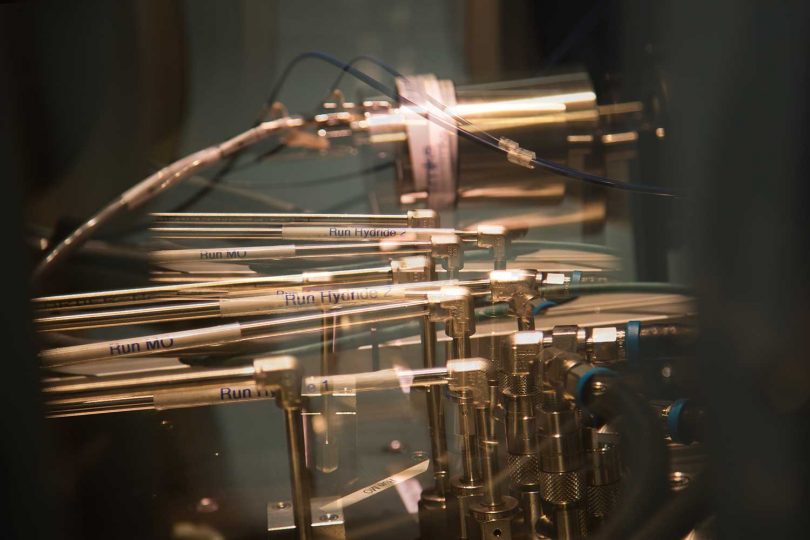CMOS chips at the cold limit Cryogenic electronics for quantum technologies
With the growth of quantum technologies, a cryogenic race has begun: where scientific experiments have been conducted to date, the race is now on to conquer the industrial top of the quantum computing iceberg. In the ArCTIC (European Union) and CryoSoQ (German Federal Ministry of Education and Research, BMBF) projects, TU Braunschweig is contributing to the development of the necessary technologies. This research benefits both the region in Quantum Valley Lower Saxony (QVLS) and the European high-tech industry.
The bottleneck starts at around four degrees above absolute zero, which is equivalent to -269.15 degrees Celsius. As soon as a technology has to operate below four degrees Kelvin, not only is the material under extreme stress, but the electronic components must also consume very little power. This is because any additional power supply increases the need for cooling and threatens to render the fragile environment unusable. However, quantum technologies in particular often make use of physical effects that only work properly under cryogenic conditions.

Professor Vadim Issakov (right) and PhD student Paul Shine Eugine work on circuits close to absolute zero at TU Braunschweig. Photo credit: Laurenz Kötter/TU Braunschweig
Interlocking projects at EU and national level
In the EU project “Advanced Cryogenic Technologies for Innovative Computing”, or ArCTIC for short, 34 international partners from science and industry are working on cryogenic microelectronics. The focus here is on scalable, reliable control elements for quantum computers, although other (quantum) technologies are also expected to benefit from the new components. The Institute for CMOS Design at TU Braunschweig, led by Professor Vadim Issakov, is developing cryogenic high-frequency circuits that are designed for minimal power consumption. These are used, for example, to control Josephson Arbitrary Waveform Synthesizers (JAWS), which can be used as voltage standards in metrology. The circuits are one of the ways in which the basic research of the QuantumFrontiers Cluster of Excellence is being applied. The results will also flow directly into the institute’s teaching and become an additional facet of the new Master’s programme in Quantum Technologies in Electrical and Computer Engineering.
On a regional level, the TU’s Institute for CMOS Design and the Physikalisch-Technische Bundesanstalt are also launching the joint BMBF project “Cryogenic Integrated CMOS Signal Sources for Quantum Limited Microwave Amplifiers”, or CryoSoQ for short. The project is focuses on parametric amplifiers for superconducting quantum computers. The generation of signals for these components slows down the scalability of the computers, as signal generation for these amplifiers has to be realised outside the cryostat using large devices at room temperature. The researchers are therefore working on components that will perform just as well at four Kelvin as their warm-weather counterparts. To achieve this, the currently large devices must be realised on a small chip. The results will contribute to technological dominance in quantum computing and directly influence the quantum technologies of German companies such as Supracon and Infineon.
About the projects
The CryoSoQ project started on 1 August 2024 for a period of three years under the leadership of the Physikalisch-Technische Bundesanstalt. The German Federal Ministry of Education and Research (BMBF) is funding the project with 600,000 euros. TU Braunschweig will receive almost 400,000 euros of this sum. The ArCTIC project started on 1 April 2024 and will run for three years under the leadership of the Interuniversitair Micro-Electronica Centrum (imec) in Belgium. The European Union (Chips JU) is funding the 34 partners with a total of 11 million euros, of which TU Braunschweig will receive 600,000 euros.

